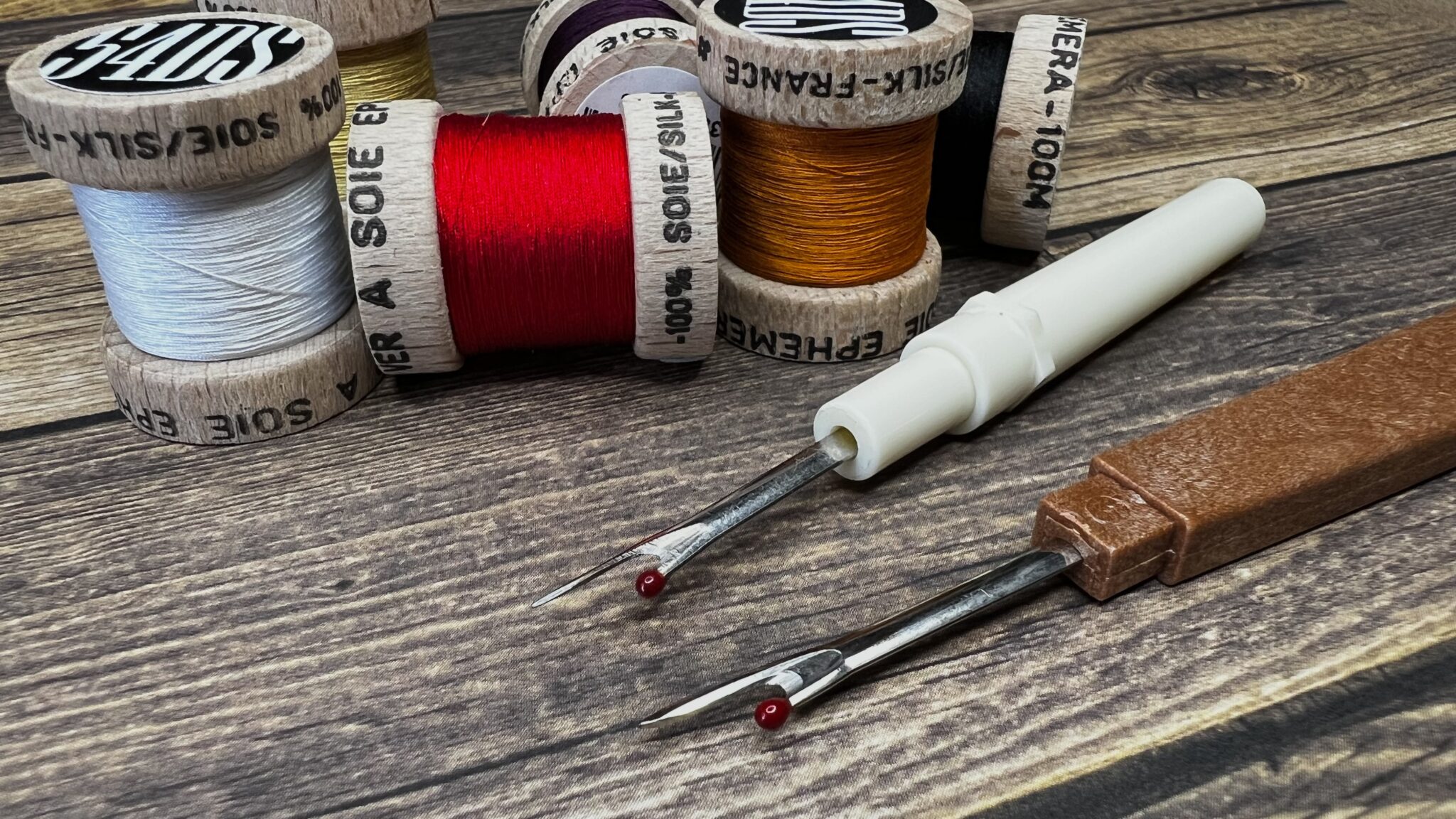
This is a little thread cutting trick I figured out a long time ago when I was tying for a fly shop. Like so many great ideas, it was forgotten, only to be recalled after some triggering event. In this case, it was re-watching how Tenkara no Oni cut his thread this video at 03:43:
Notice that rather than completely closing the blades together as we normally would, he only partially closes the scissors to form about a 30º “V”, places it on the thread, slides it up to the cut point, then juts the scissors forward to cut the thread.
This has the obvious advantage of avoiding accidentally cutting hackle fibers but takes a little practice and your scissors need to be really sharp for it to cut well without fraying the thread and leaving a trail of unwound fibers (and most tyer’s scissors aren’t). But it’s a better option that snipping if you want to avoid chopping off something you didn’t mean to.
Scissors
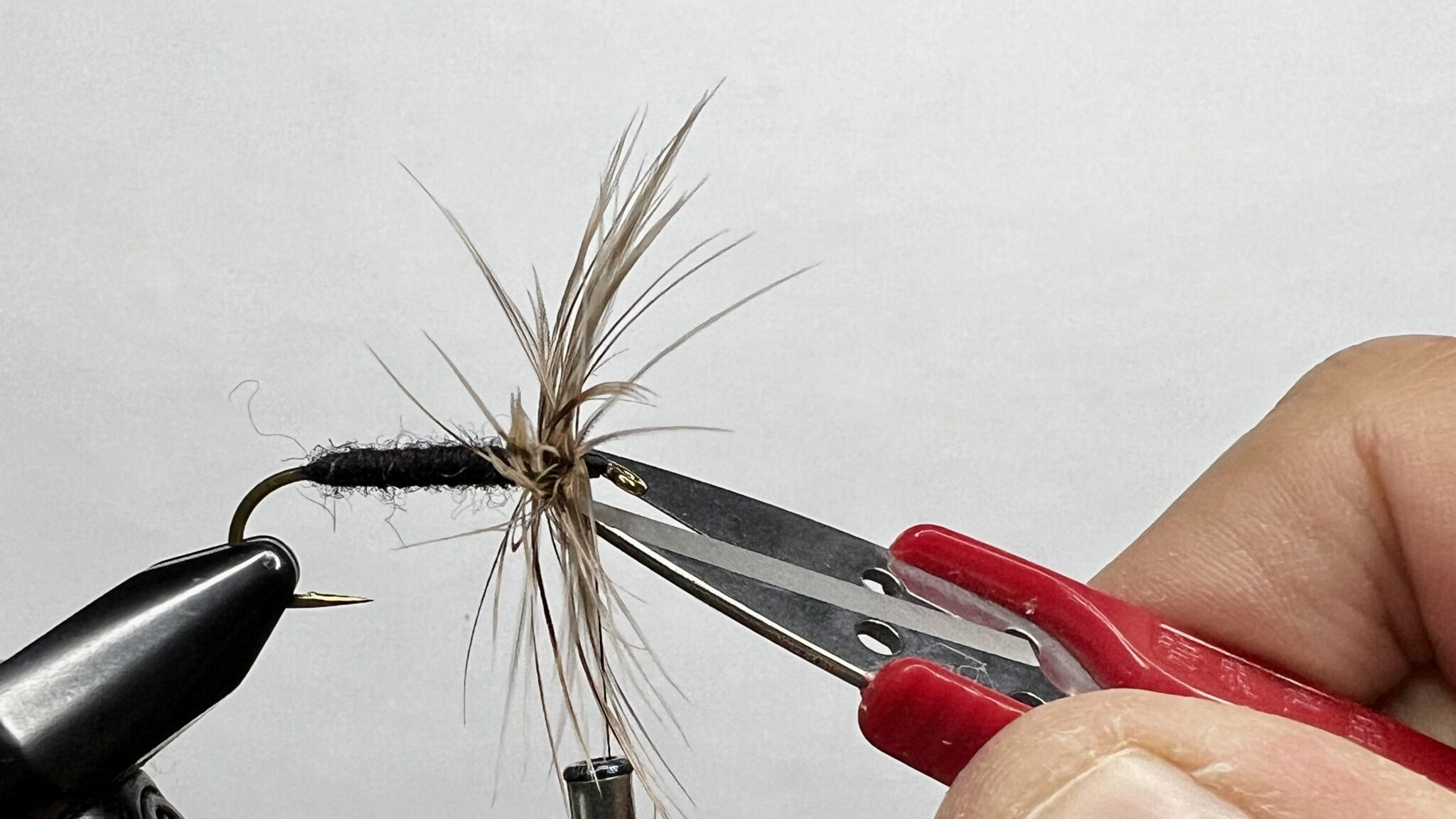
Scissors are great multi-use tools and the obvious choice since we already have them and it’s probably the way most of us initially learned. But when finishing your fly, it’s all too easy to accidentally snip off some innocent hackle bystanders (especially on sakasa kebari).
For this reason (and because I like a neat head), I switched to using an Exacto knife long ago. Since it’s so sharp, you can make precision cuts without cutting hackle, and get so close to the head that there’s no tag. This is the preferred tool of many professional and commercial tyers.
Exacto Knife
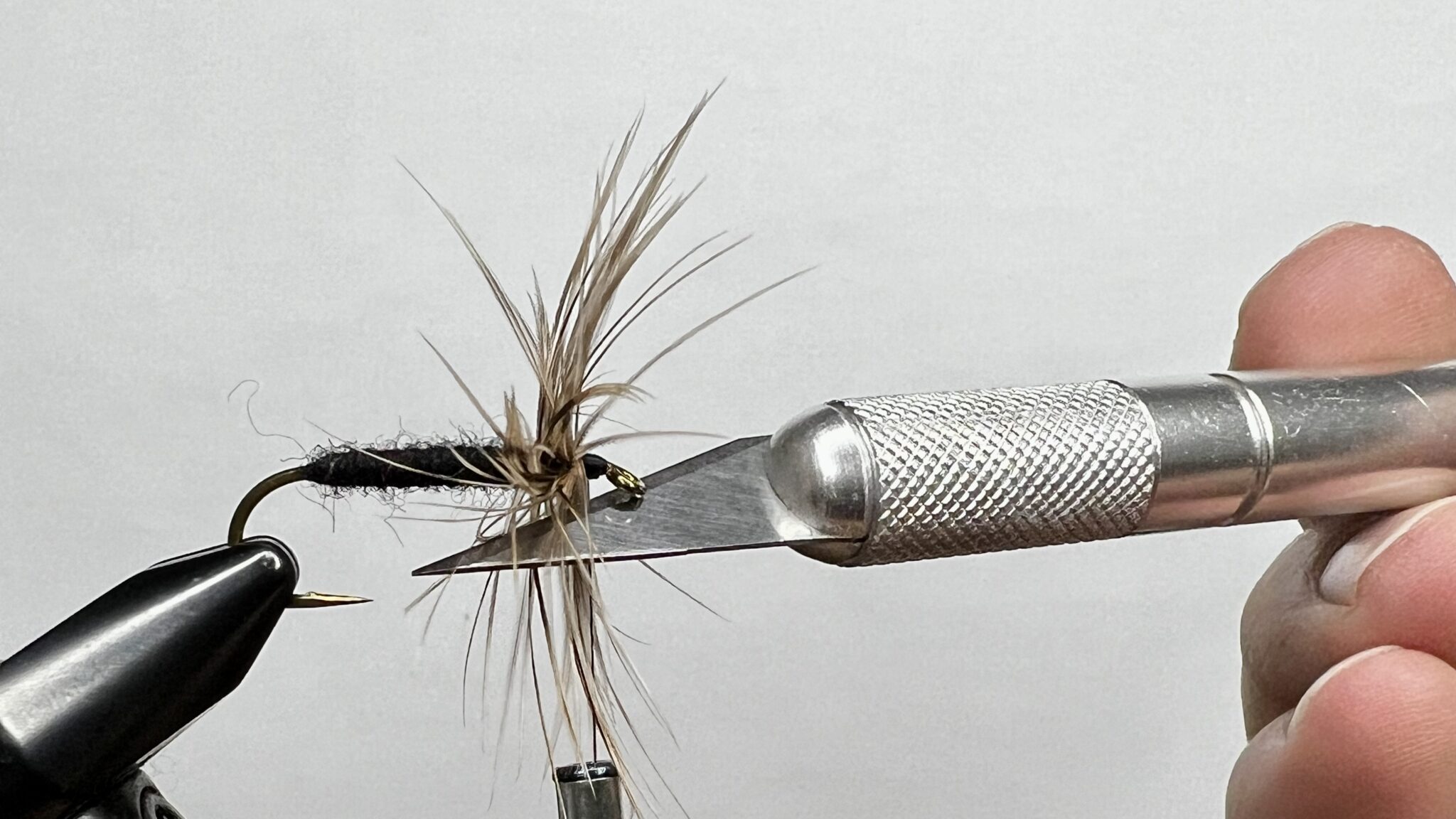
Knives like these are still my all-around favorite, but they also take practice. That razor edge is unforgiving, and even lightly touching something like ribbing or a hackle stem could spell disaster two seconds before the fly was ready to exit the vise, leaving you with a mangled corpse of an unwound monstrosity.
As an alternative, you can use a simple seam ripper to perform the same task without cutting hackle fibers or ribbing and still make a clean cut.
Seam rippers are used in sewing to cut, well, seams. You slip the fork into the seam so that the thread is in between the two tines and push forward to “rip” through the stitches. And it’s the same principle we’re talking about here and that you just saw in my video of Tenkara no Oni above.
The inside edges of the fork are smooth and the only cutting edge is at the bottom so the tines kind of guide the thread down to the blade.
Seam Ripper
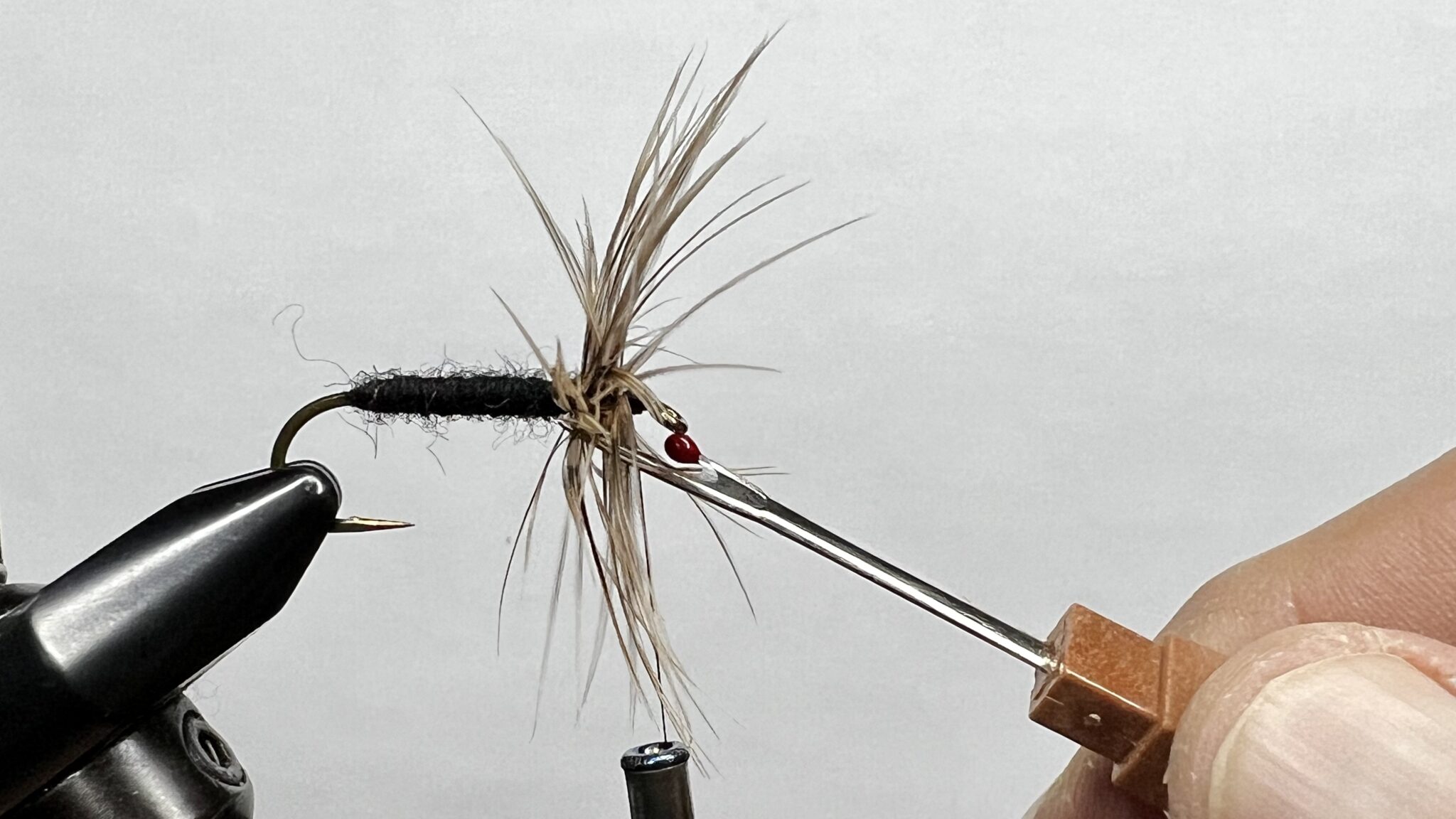
Sometimes, a seam ripper is the right choice for finishing your fly; however, unlike scissors or razors, they’re pretty much a single-purpose tool. But since they’re so inexpensive, it can’t hurt to add one to your fly tying toolbox.
I’m not suggesting that the seam ripper is the be-all, end-all tool that should replace your scissors or Exacto knives (though I know there will be someone out there who will infer exact-o-ly that–there always is) but in certain situations, it’s a good choice.
When I tie sakasa kebari for the Etsy shop, I use my seam ripper because it’s quick and I can cut without having to take any precautions to cut something unintentionally.
They’re cheap, work fast, cut clean, and are easier to pick up from the tying desk than scissors (no finger loops).
Give it a try and see what you think. They’re stocked in any brick-and-mortar that carries sewing supplies or, of course, online. I found a pair on Temu for less than a dollar so in my opinion, it’s worth a shot to see if you like it. And you might even know someone who sews who’ll let you try theirs.
Coincidentally, I just saw a new tool from Stonfo in the latest Feather-Craft catalogue that functions exactly the same as a seam ripper, but of course is ten times more expensive. Save the $$$ and get one from your local sewing shop or online corporate juggernaut-of-choice.
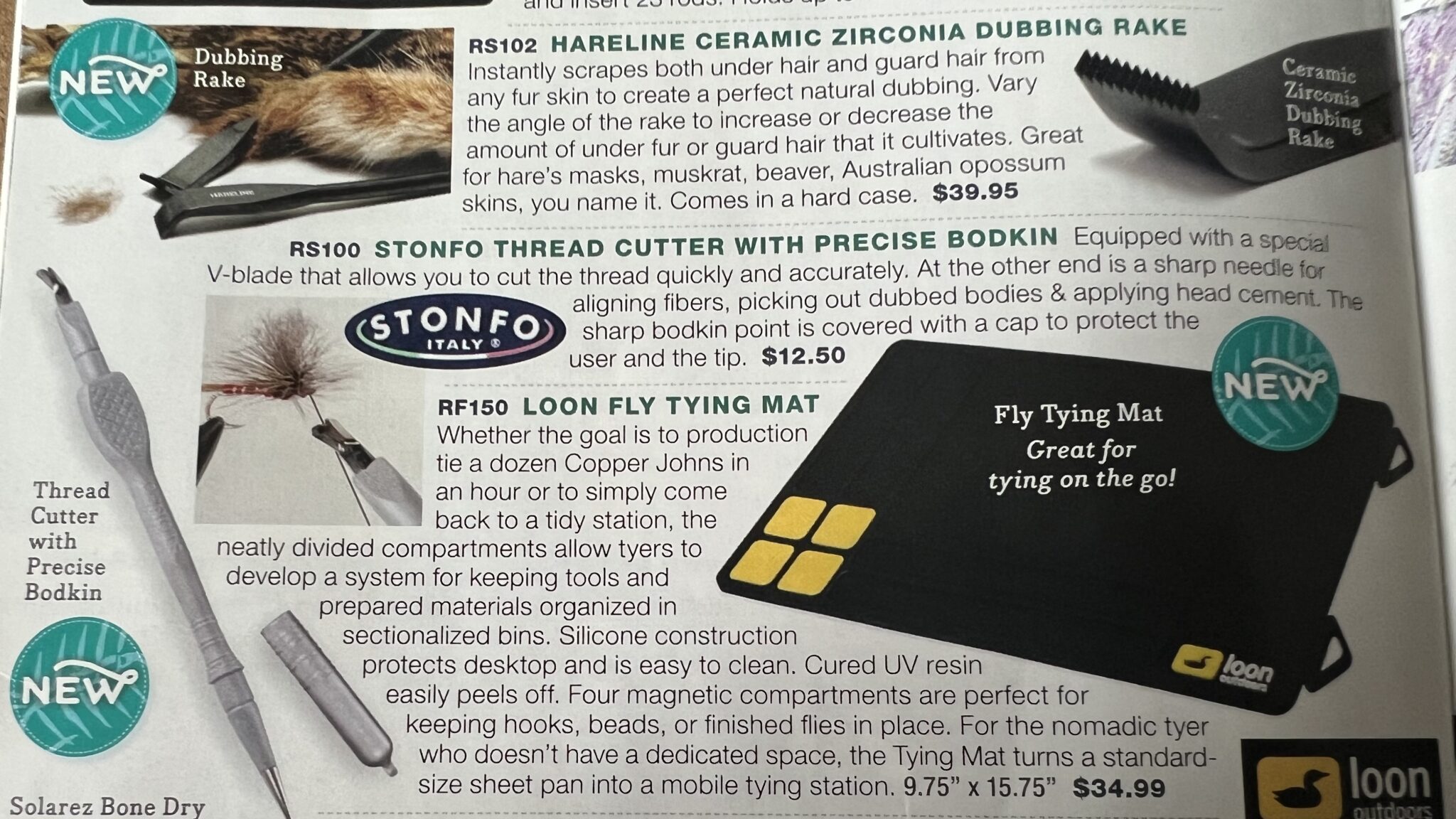








With some of the super, gel spun type threads, like Semperfli Nano silks, it’s the only way I cut the thread in order to resist fraying. It quickly transferred to other threads, such a polyester or nylon.
Using Razor scissors in the manner mentioned in your post, a push instead of cut, makes the final process of finishing a midge pattern so much easier. Especially for those with aging eyes or unsteady fingers.
Hi Jeff, that’s interesting. I don’t use gel spun thread so haven’t been able to try it. But now you’ve got me wondering if it would also work on Kevlar thread, which I do sometimes use for saltwater flies. That stuff is a pain to cut and frays like hell.
Jason, I just use Tim Flagler’s trick of sharpening the end of my whip finisher to a sharp, chisel point. That way you already have the whip finisher in your hand, and dont have to reach for anyother tool. Finish whip finishing, hold light tension on thread, and just touch line with chisel edge to cut it cleanly.
Cuticle nippers and cutters come in different styles. One kind I use looks like the Stonefo thread cutter with precision bodkin, a tiny v notch to cut. I also have a pair of cuticle nippers that are like tweezers with sharpened edges. It’s excellent for nipping through a feather stem. I like cuticle tools because I mostly tie-in hand and you can use them either-handed, unlike scissors. I prefer to tie left-handed and when tying in hand, you need ambidextrous tools. Another nice tool is eyebrow shaping safety razors. All found in any cosmetic aisle.
Great info., Lisa! I love finding uses for “outsider” tools and materials and applying it to fly tying.